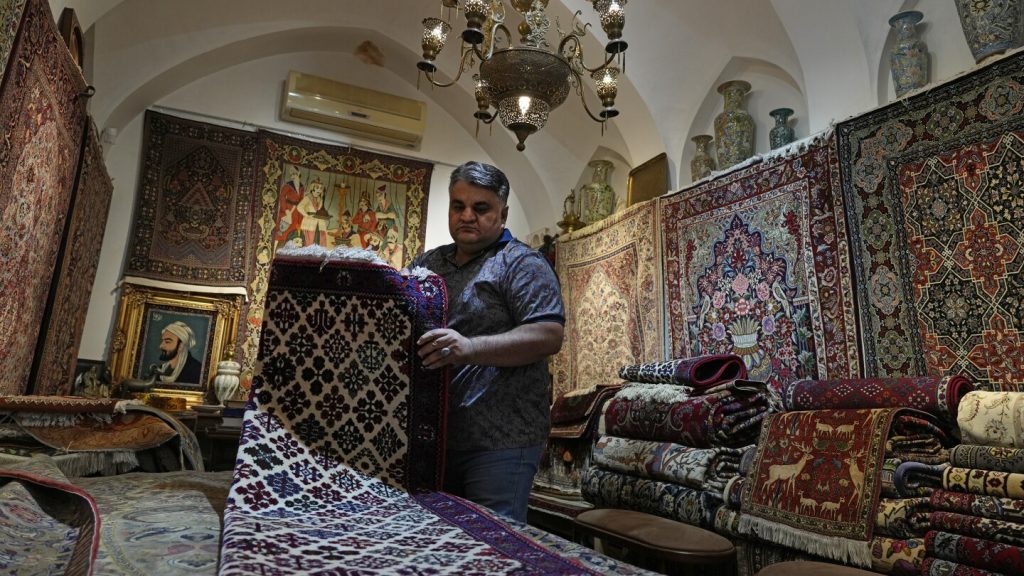The historic Kashan bazaar in central Iran, once renowned for its silk carpets, has seen a drastic decline in its rug weaving industry since the collapse of Iran’s nuclear deal with world powers and tensions with the West. Rug exports, which were over $2 billion two decades ago, have now plummeted to less than $50 million in the last year. American customers, who were some of the best buyers, are no longer able to make purchases due to the sanctions imposed by the US. Weavers are struggling to sell their rugs, with some working for as little as $4 a day.
The rug-weaving industry in Kashan has a long-standing tradition and has been recognized as part of UNESCO’s list of intangible cultural heritage. Many of the weavers are women who have inherited the weaving skills from previous generations, using traditional materials like vine leaves and pomegranate fruit to create dyes for their threads. Each rug can take months to make. Western tourists used to visit Iran and purchase rugs as gifts, but after the 1979 Islamic Revolution and increased sanctions, the industry faced challenges. However, in 2000, a ban on Iranian imports, including rugs, was lifted by the Clinton administration.
In 2015, Iran signed a nuclear deal with world powers that allowed for the resumption of rug exports. But in 2018, the US unilaterally withdrew from the agreement, leading to renewed sanctions that have once again impacted the rug trade. Trump’s actions have been blamed for the collapse of the industry, with annual exports to the US valued at $80 million prior to the sanctions. The lack of tourists visiting Kashan has also contributed to the decline in sales, as American and European tourism in Iran has significantly decreased.
The financial challenges in Iran, including the collapse of the rial currency and restrictions on international transactions, have made it difficult for both tourists and locals to purchase rugs. Many Iranians are unable to afford handwoven rugs due to low wages and inflation, leading to an increase in Afghan migrants working in the industry. Designers like Javad Amorzesh have seen a significant decrease in orders and have had to let go of staff, working alone in cramped spaces. The isolation and financial struggles faced by rug weavers in Kashan reflect the broader economic challenges in Iran.
Overall, the once thriving rug-weaving industry in Kashan has been severely impacted by political tensions, sanctions, and economic hardships. Weavers are facing financial difficulties, struggling to sell their products, and seeing a decrease in orders from both tourists and locals. The decline in the rug trade not only affects the livelihoods of the weavers but also threatens the preservation of the traditional art form that has been a part of Iranian culture for generations. The future of Kashan’s historic bazaar and its weaving industry remains uncertain amidst the ongoing challenges facing Iran.


